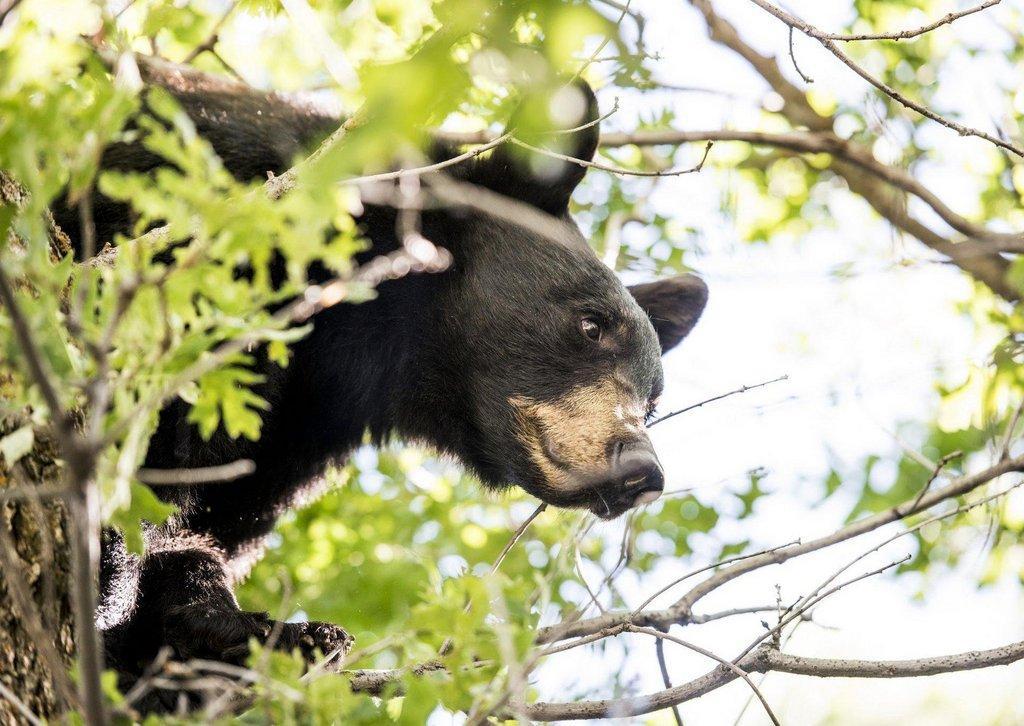Utah Wildlife News Release
DWR proposes bear hunting rules for 2019 – 2021 seasons
More spot-and-stalk hunts—and keeping Utah’s black bear hunting rules the same for the next three seasons—are among bear hunting proposals Division of Wildlife Resources biologists will share at an upcoming series of public meetings.
Darren DeBloois, game mammals coordinator for the DWR, says the changes would help bears and hunters.
“The number of bears doesn’t fluctuate much from year to year,” he says, “so it makes sense to keep the rules consistent and not change them every year. If we leave the rules in place for three years, we’ll end up with a better, long-term picture of how the state’s bear population is responding to the hunting rules.”
Adding more spot-and-stalk hunts will give more hunters a chance to hunt bears while increasing the number of bears taken only slightly. “The success rate on spot-and-stalk hunts is similar to archery hunting for deer,” DeBloois says. “We can offer more opportunities to spot-and-stalk because the number of bears taken with spot-and-stalk is lower than other types of hunting.”
You can see all of the biologists’ black bear hunting proposals, as well as unit plans that will guide the management of moose and pronghorn in Utah, at www.wildlife.utah.gov/public_meetings.
Learn more, share your ideas
After you’ve reviewed the proposals and plans at www.wildlife.utah.gov/public_meetings, you can let your Regional Advisory Council members know your thoughts by attending your upcoming RAC meeting or by sending an email to them.
RAC chairmen will share the input they receive with members of the Utah Wildlife Board. The board will meet in Salt Lake City on Jan. 10 to approve the unit plans and rules for Utah’s black bear hunts.
Dates, times and locations for the RAC meetings are as follows (NOTE: The start time for the Southern Region meeting has been moved up to 6 p.m.):
Central Region
Dec. 4
6:30 p.m.
Springville Civic Center
110 S. Main St.
Springville
Northern Region
Dec. 5
6 p.m.
Brigham City Community Center
24 N. 300 W.
Brigham City
Southern Region
Dec. 11
6 p.m.
Cedar Middle School
2215 W. Royal Hunte Dr.
Cedar City
Southeastern Region
Dec. 12
6:30 p.m.
John Wesley Powell Museum
1765 E. Main St.
Green River
Northeastern Region
Dec. 13
6:30 p.m.
DWR Northeastern Region Office
318 N. Vernal Ave.
Vernal
You can also provide your comments to your RAC via email. Email addresses for your RAC members are available at www.wildlife.utah.gov/dwr/rac-members.html.
The group each RAC member represents (sportsman, non-consumptive, etc.) is listed under each person’s email address. You should direct your email to the people on the RAC who represent your interest.
Spot-and-stalk hunts
The number of people who want to hunt bears in Utah has far outpaced the number of bear hunting permits that are available. To give more people a chance to hunt bears, DWR biologists are recommending more spot-and-stalk hunts.
So far, spot-and-stalk hunts have been held mostly on the LaSal and San Juan units in southeastern Utah. These units have the highest density of bears in the state. “Despite the high bear numbers,” DeBloois says, “only 10 to 15% of those who spot-and-stalk on the units take a bear. The success rate is similar to archery big game hunting. And those two units have a lot of bears. The success rate might be lower on units with fewer bears.”
DWR biologists recommend holding spot-and-stalk hunts on 11 units. On three of the units, an unlimited number of permits would be sold, but the hunt would end as soon as three bears are taken on each of the units. On the remaining units, a limited number of permits—a total of 205—would be offered. Based on a 10% success rate, DWR biologists estimate that less than 25 bears would be taken during the spot-and-stalk hunts.
(During spot-and-stalk hunts, you can’t pursue bears with hounds or use bait to lure bears in. Instead, you walk through the forest, hoping to spot a bear that you can stalk and take.)
Keeping hunting rules the same
Not changing the hunting rules every year would help biologists better determine the effect the rules are having on the bear population.
DeBloois says bears live for a relatively long period of time, have fairly low reproductive rates and aren’t affected much by severe changes in weather. Because the number of bears doesn’t fluctuate much, DeBloois says changing the hunting rules every year can actually be counterproductive to managing black bears effectively.
“A better way to determine how hunting rules are affecting a bear population is to leave the rules in place for a longer period of time,” he says. “Keeping the hunting rules and permit numbers consistent will provide us with a better, long-term picture of how the rules are affecting the population. That, in turn, will give us better long-term data that will help us draft the recommendations we present in 2021.”
If something out of the ordinary happens to the bear population before the three-year period is over, a couple of ‘safety valves’ are in place that allow immediate changes to be made.
“One is to meet with the Wildlife Board, explain the situation and ask the board to make some changes,” DeBloois says. “If we’re facing a critical situation, the director of the DWR has the authority to close hunts down. So, not changing the rules for three years doesn’t mean changes can’t be made if something drastic happens to the population.”


